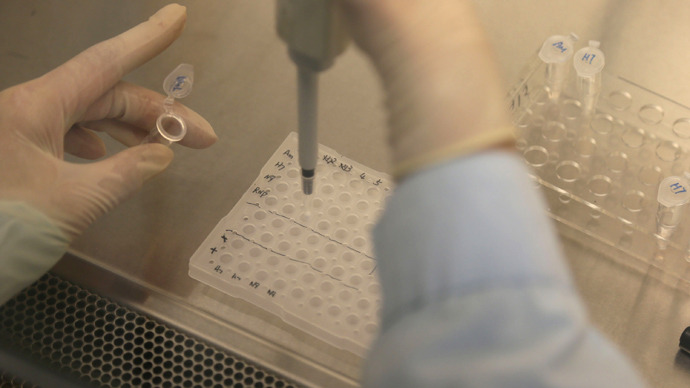Chinese scientists slammed for creating new ‘deadly’ influenza strains

News that a research laboratory in China is deliberately engineering new hybrid strains of bird-flu virus and human influenza which could cause a pandemic has some experts alarmed.
Lord May of Oxford, former president of the UK’s Royal Society,
has denounced the results conducted by a team under Professor Chen
Hualan, the director of China’s National Avian Influenza Reference
Laboratory.
H7N9, most commonly referred to as bird flu, has been making
headlines around the world recently after China confirmed 126 cases
which had killed 24 people as of May 1, 2013. That virus, however,
has not yet been confirmed to be human-to-human transmissible,
which would greatly increase the risk of a pandemic.
That missing leap into human contagion is precisely what scientists
as Harbin Veterinary Research Institute in China were interested in
experimenting with, which ultimately led that laboratory to produce
new viral strains by mixing the H5N1 bird-flu, which can be lethal,
but is not easily transmitted between humans, with a 2009 strain of
the H1N1 flu virus, which is highly communicable between
humans.
According to Lord May, who spoke with The Independent, the
experiment represents a breach of safety.
“The record of containment in labs like this is not reassuring.
They are taking it upon themselves to create human-to-human
transmission of very dangerous viruses. It’s appallingly
irresponsible,” said May.
The research was conducted by Chen’s team within a laboratory with
the second highest security level to prevent the virus escaping
containment. According to results published by the periodical
Science on Thursday the study produced 127 different viral hybrids
among H5N1 and H1N1, five of which demonstrated airborne
transmission between guinea pigs test subjects.

According to Chen, the value of what some experts seem to think is an unnecessary risk is to observe these human transmissible strains to head off a potential pandemic.
“High attention should be paid to monitor the emergence of such mammalian-transmissible virus in nature to prevent a possible pandemic caused by H5N1 virus,” Chen told The Independent.
Others viral experts are less than enthusiastic about Chen’s work, however. Professor Simon Wain-Hobson, a prominent virologist at the Pasteur Institute in France, lauded the work, but also questioned its usefulness.
“It’s a fabulous piece of virology by the Chinese group and it’s very impressive, but they haven’t been thinking clearly about what they are doing. It’s very worrying,” said Wain-Hobson to The Independent.
“The virological basis of this work is not strong. It is of no use for vaccine development and the benefit in terms of surveillance for new flu viruses is oversold,” he added.
A similar H5N1 experiment published in March was conducted by virologist Ron Fouchier of Erasmus Medical Centre in the Netherlands. That experiment led scientists to impose a year-long moratorium on hybrid viral experiments due to the belief that safeguards were insufficient for that type of work.
Microbiologist Richard Ebright of Rutgers University, who was critical of Fouchier’s work, was equally skeptical of the Chinese laboratory’s research.
“The sole major difference is the use of guinea pigs in this paper and ferrets in that paper,” said Ebright.
“In my assessment, neither paper contains substantive new information that justifies the risks posed by the research,” he told Wired.
According to Wain-Hobson, hybrid viral experiments such as Chen’s could not, in the end, be extrapolated to determine the danger to humans.
“We don’t know the pathogenicity [lethality] in man and hopefully we will never know. But if the case fatality rate was between 0.1 and 20 per cent, and a pandemic affected 500 million people, you could estimate anything between 500,000 and 100 million deaths,” Wain-Hobson said.














